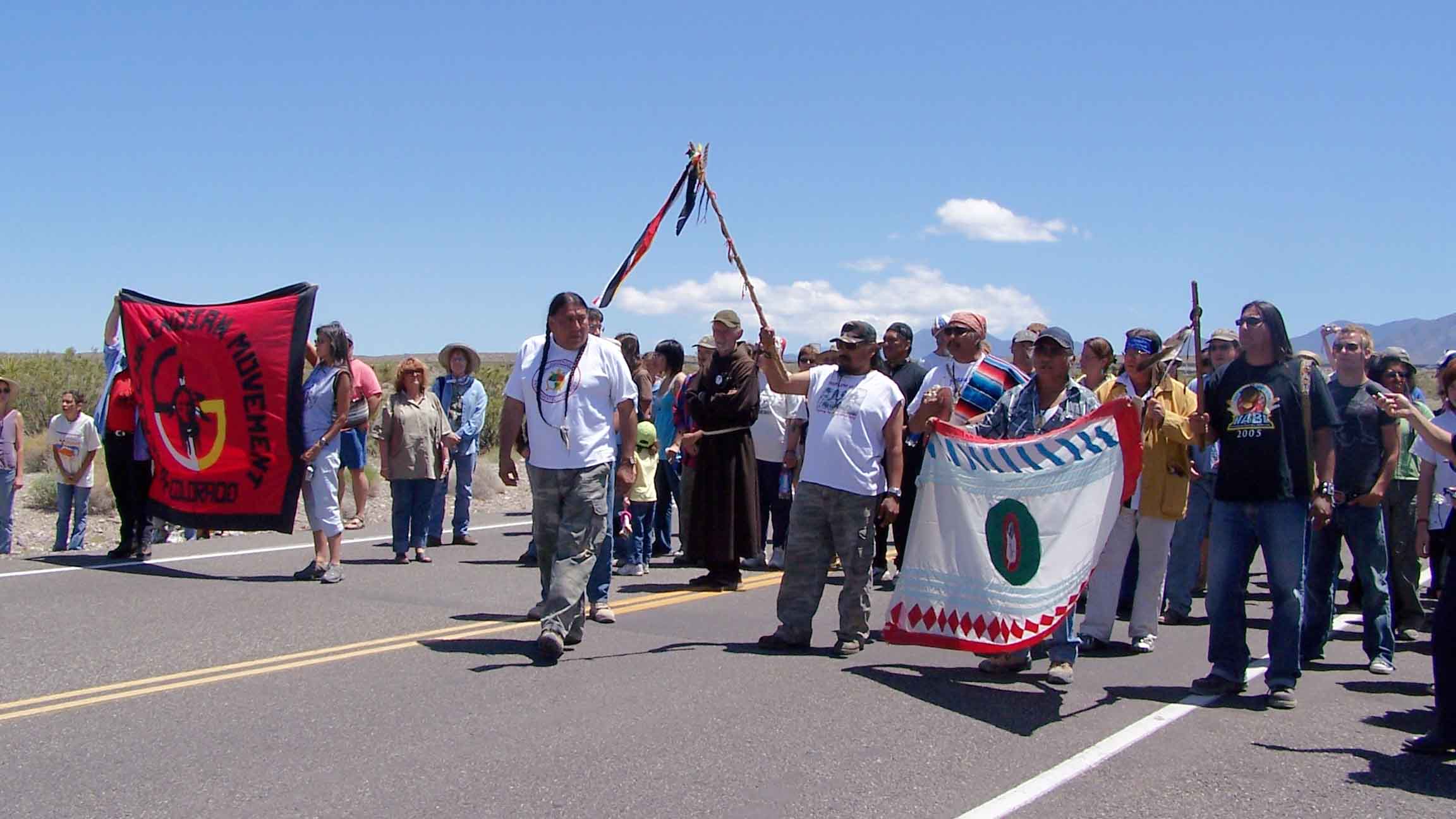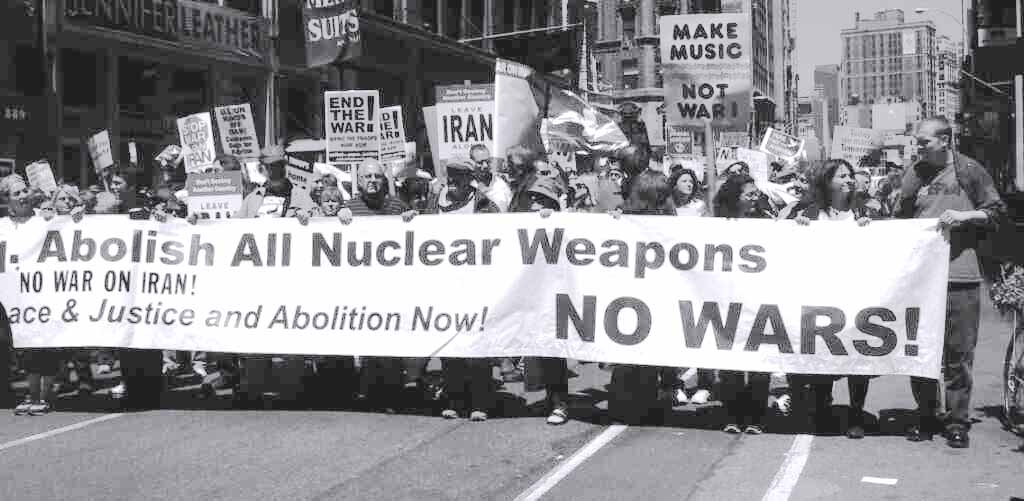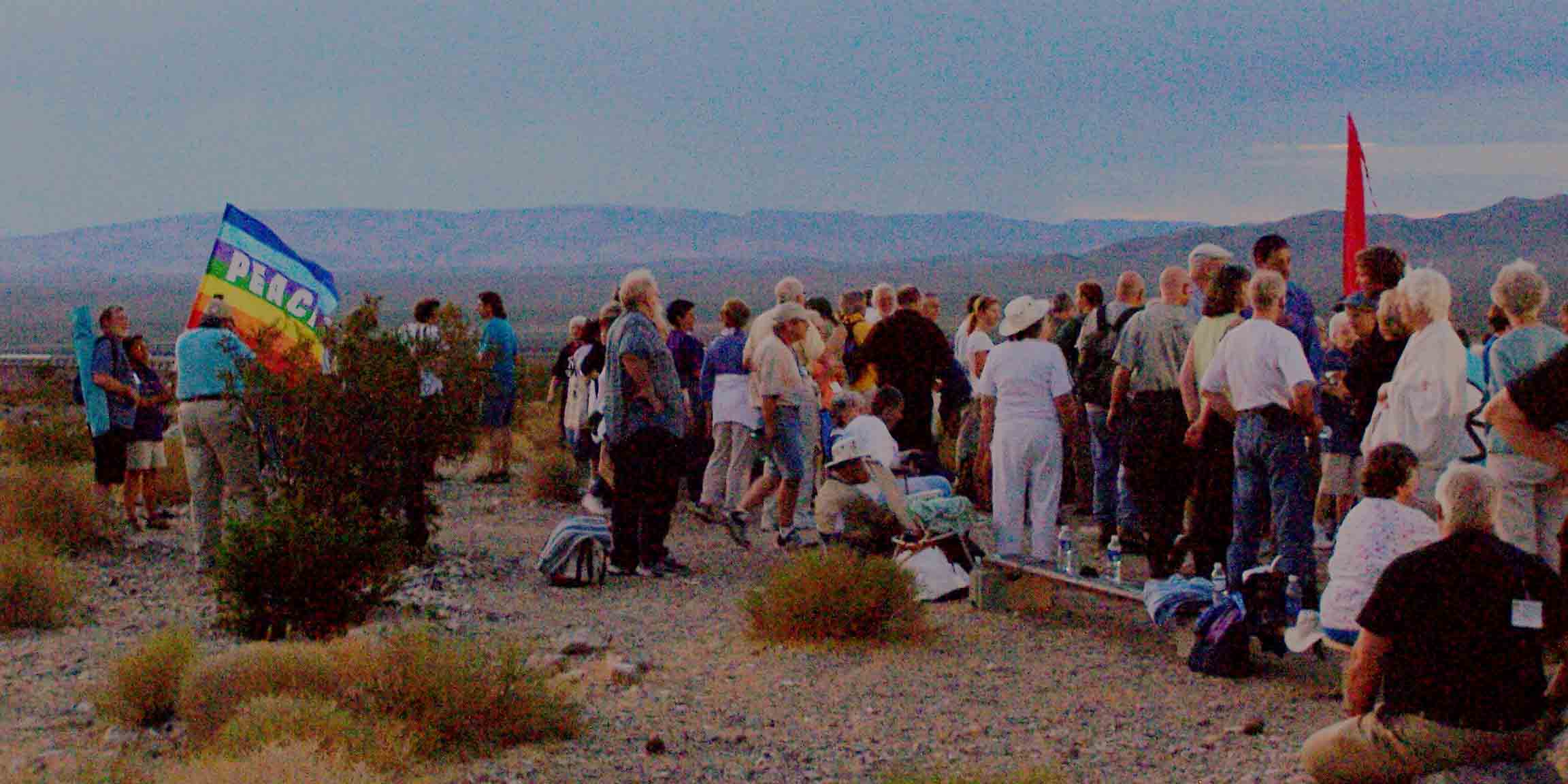
Behind the Western Shoshone flag, protesters move down the road towards the Nevada Test Site gate, May 28, 2006
Andrew Lichterman
Sunday, I was at the Nevada Test Site, speaking at a demonstration against Divine Strake, a high explosive test that will detonate 700 tons of high explosive to simulate the effects of a low-yield nuclear explosion. One of the main points of my talk there was that mainstream debate about U.S. weapons programs remains largely confined to how best to pursue military dominance in service of what really is a global empire. Whether either empire or the use of overwhelming violence to sustain it are acceptable remains well outside the realm of “reasonable” discussion.
Yesterday, Exhibit A for the narrowness of Beltway discourse appeared in the New York Times: an article about the proposal to put non-nuclear warheads on Trident submarine launched ballistic missiles (SLBMs; see Michael Gordon, “Pentagon Seeks Nonnuclear Tip for Sub Missiles,” The New York Times online, May 29, 2006) Much of the piece was devoted to the hyper-narrow debate in Congress, focused mainly on whether or not a non-nuclear SLBM launch might be mistaken for a nuclear attack on another nuclear weapons state (particularly Russia), resulting in a catastrophe for us (and really, who else do U.S. politicians care about, anyway?). The rest covered the barely broader perspectives offered by Washington arms controllers, some of whom apparently support the move to conventional strategic missiles, and some of whom do not. The most critical comment came from Steve Andreason, a former Nation Security Council staffer:
“‘Long-range ballistic missiles have never been used in combat in 50 years,’ Mr. Andreasen said. ‘Once the U.S. starts signaling that it views these missiles as no different than any other weapon, other nations will adopt the same logic.’” Gordon, “Pentagon Seeks Nonnuclear Tip for Sub Missiles.”
Bruce Blair, President of the World Security Institute and normally a sensible and insightful voice on arms control issues, offered views that were, if correctly reported, pretty disappointing. According to the Times, Blair described the development of highly accurate and destructive non-nuclear missiles with global reach as “a welcome trend toward substituting conventional weapons for nuclear systems, assuming that adequate safeguards can be worked out to avoid the risk of inadvertent nuclear confrontation.” The Times piece quoted Blair directly as saying
“‘They make a lot more sense than 14 subs loaded to the gills with nuclear-armed Trident missiles in this day and age.’” Gordon, “Pentagon Seeks Nonnuclear Tip for Sub Missiles.”
One can never know what someone really said to a reporter, or what the context was–reporters’ agendas frame the interview, and inevitably drive the choice of quotes. But to put it simply, anyone who thinks that its good for the U.S. to spend a single dime on new, more useable strategic weapons, whether nuclear or conventional, is not on the same side of the global struggle that I am. Further, under anything like the current distribution of wealth and power and with nuclear arsenals still numbering in the thousands, substituting a few highly accurate, destructive, and usable “conventional” missiles for nuclear ones will not reduce the nuclear danger. In the real world of a military industrial complex intertwined with thoroughly corrupt political and corporate elites firmly committed to global military dominance, we won’t get conventional strategic weapons instead of nuclear weapons. We will get dangerous numbers and varieties of both.
(more…)




